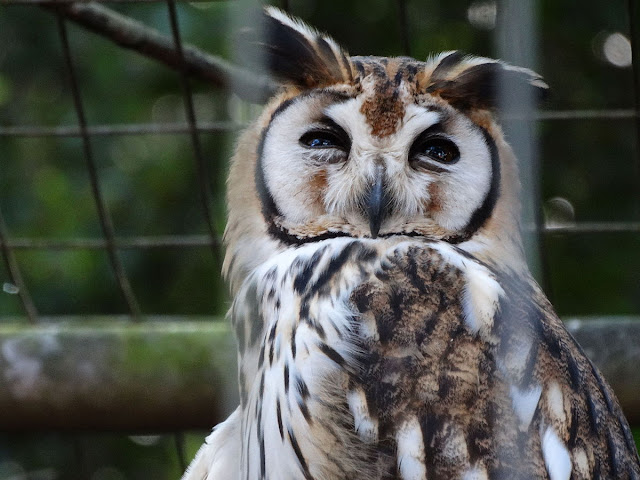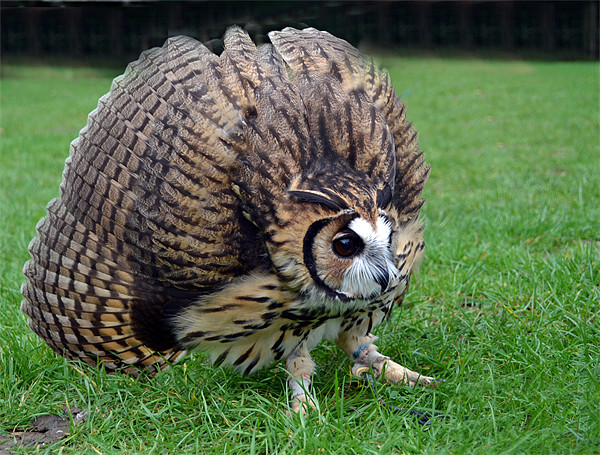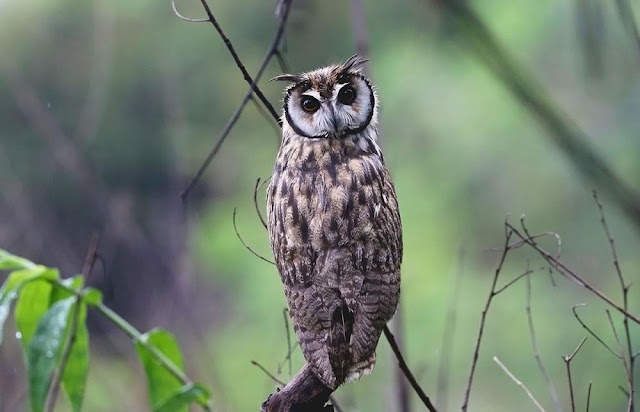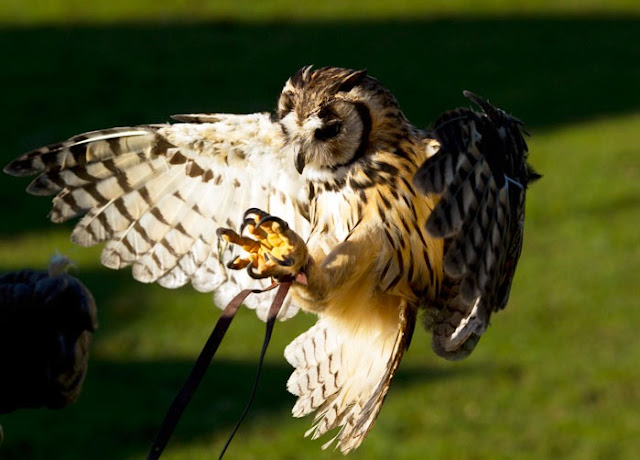The striped owl (Pseudos-cops clamator) is a medium-sized owl
with large ear tufts and a brownish-white facial disk rimmed with black. Its
beak is black, and it has cinnamon-colored eyes. It has shorter, rounder wings
than most of its close relatives. The upper-parts are cinnamon with fine black
vermiculation and heavy stripes. The underparts are pale tawny with dusky
streaks. It is native to South America, and parts of Central America.
Physical characteristics
This medium-sized owl has ear tufts that are well developed
and projected to the sides or to the top (when disturbed) of the head. Its
large ears are complex and asymmetrical, and extraordinarily sensitive. It has
a strongly defined white blackish-rimmed facial disc, dark brown eyes and
almost blackish bill. Its upperparts are yellowish-brown to tawny-ochre,
striped with grimy brown. Below it is buff or white, with dark brown stripes.
It has short wings and a long tail, the flight feathers and tail have
alternated buff and grimy brown bands. Tarsi and toes are feathered. It has
powerful talons for their body size.
Size
Length 30-38 cm. Wing length 228-294 mm. Tail length
127-165mm. Weight 320-556g. Females are heavier than males.
Habitat
This owl prefers open or semi-open grassland and savannas
with scattered trees, small groves and bushes. It also occurs in open marshland
with bushes, pasture and agricultural land, as well as in wooded suburban
areas. Usually not present in dense forest, avoiding Amazon basin. Ranges from
sea-level up to approximately 1600m.
Diet
The Striped Owl feeds mainly on small mammals, medium-sized
birds, large insects such as grasshoppers and some reptiles. It regularly
rejects pellets including the indigested parts of its preys.
Breeding
Two to four eggs are laid in rudimentary nests found on the
ground in long grass and dense bushes. The female alone incubates for
approximately 33 days. Probably only one chick fledges successfully, though two
fledglings were also observed.
Behavior
The Striped Owl is sedentary within its range. It may be
seen alone, in pairs or in small groups. This species may be gregarious, and
the birds gather at roost in flocks of about 10 to 12 owls.
The Striped Owl feeds primarily on rodents and other small
mammals, some birds such as doves, and large insects. This owl hunts mainly at dusk
and by night. It performs a low flight over the open country, and makes abrupt
dives after the prey. It may also hunt from a perch, watching for preys, and
dropping down when detected.
During the day, the Striped Owl rests, hidden into the dense
foliage of trees and shrubs. It may be found on the ground, concealed under the
cover of vegetation. Outside the breeding season, they roost in small flocks by
day time. Their cryptic plumage allows these birds to be almost invisible.
At the beginning of the breeding season, the male vocalizes.
It may perform some wing-clapping displays while flying. Some displays may
occur at the nest-site, such as ritualized scraping. The male performs
courtship feeding, bringing preys to the female.
Interesting Facts
- A group of owls has many collective nouns, including a "bazaar", "glaring", "parliament", "stooping", and "wisdom" of owls.
- Nesting season begins in December and ends in March.
- Striped Owls are strictly nocturnal, but can be seen occasionally at dusk.




















No comments:
Post a Comment